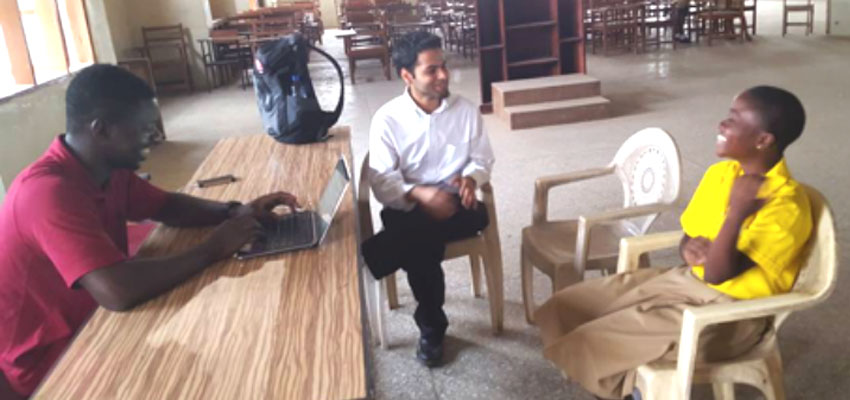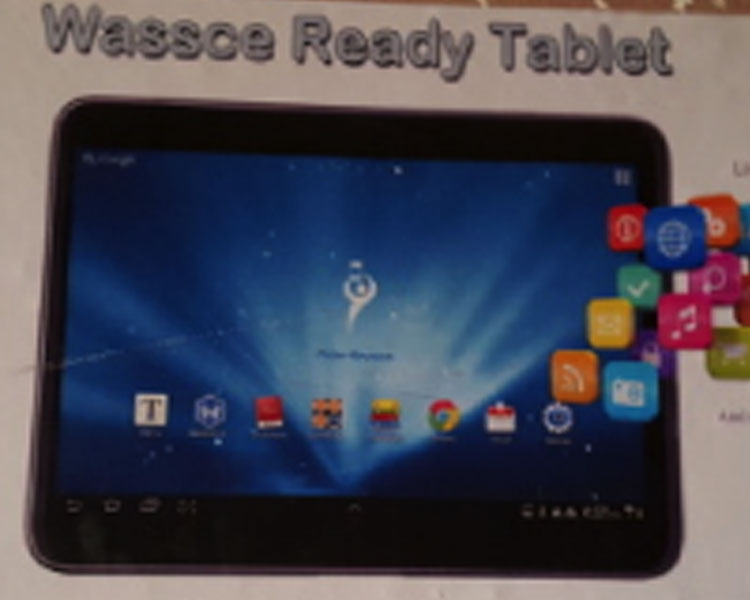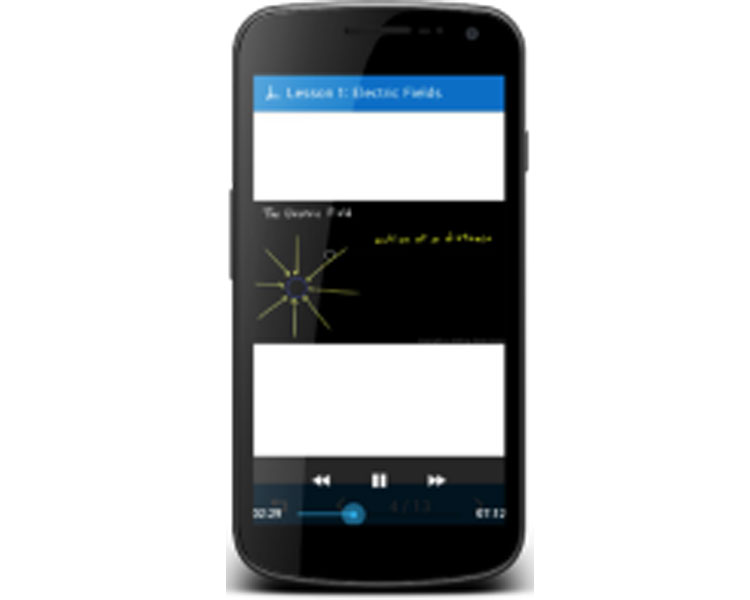
The beginnings
Though he was at the top of his class, Sam Bhattacharyya did something even he himself thought brash: he dropped out of a PhD program in Robotics and Artificial Intelligence at Vanderbilt University to teach math and science in rural Mexico as a Peace Corps Volunteer in 2012. It turned out to be a great decision. It was in Mexico that for the first time he realized first hand the broadband gap in online education, not just as a teacher trying to use Khan Academy with his students, but as a learner himself, learning languages and programming. He would often spend late nights at the only Internet café in town viewing courses on edX, because the Internet was only good enough to stream video between 11pm and 3 am.
Around this time, Tunde Alawode was just beginning his studies at MIT after finishing his undergraduate studies at a university in Nigeria. This jump was made possible entirely through a fortunate access to the MIT Open Course Ware (see related story, MIT’s OpenCourseWare Opens Door to MIT for Student) for four of his five years at the University of Lagos; such is the power of online education. Unfortunately, the library that provided this access was shut down due to administrative lapses just after he graduated. This probably closed the door of opportunity for many students (see related story, MTN to withdraw multi-million digital library donated to UNILAG).
The meeting
dot Learn was borne in the Fall 2015 Development Ventures class at the MIT Media Lab (part of the suite of D-Lab courses), where Sam Bhattacharyya (now a second year MBA candidate at the MIT Sloan School of Management) and Tunde Alawode (now a second year PhD candidate in Mechanical Engineering at MIT) met for the first time. In the preceding years, we had both worked on STEM education in emerging markets, Tunde on ImpactLabs and The Bridge Initiative in Nigeria and Sam as a Peace Corps Volunteer and for ELiTE Education in Mexico. We had a common goal of reducing global education inequality, and believed in the power of technology to transform lives, but from years of firsthand experience we both saw and knew that online education doesn’t work in emerging markets, so when Sam pitched the idea for dot Learn in class, they decided to go for it full force.
The idea
Our idea was simple—can we make online education work for emerging markets? Sam had been thinking about the problem for some time, and had already come up with a way to make the full online education experience (videos, quizzes, games etc) work offline on mobile phones—but it wasn’t until our "aha" moment in a late-night brainstorming session that we came up with our signature encoding technology—to reduce file sizes by over 10,000x. With this, we could fit a full edX course into 1 MB, and deliver it to students over mobile networks for less than the cost of sending a single SMS. At that point, we knew we were onto something, and we had to take this project to the next level.
The deep dive
To figure out if this technology would work, we decided to create a prototype and pilot it in the field. One late night at the Martin Trust Center for MIT Entrepreneurship we literally drew up a map of the world, and crossed of countries and regions, one by one, until we got to Ghana. We pitched our idea to the D-Lab: Education instructor, Pedro Reynolds-Cuéllar, who gave us feedback and invited us to pitch at the Fall 2015 D-Lab Showcase. Further, we got funding from D-Lab: Education and MIT100K to conduct the primary market research and test our prototype with students during MIT's Independent Activities Period in Januar of 2016.
Through the contacts we got from D-Lab: Education, we were able to arrange interviews with students, teachers, headmasters and directors of education-focused NGOs in the month of January.
What we weren’t expecting
Our main fear coming to Ghana was that the purchasing power of students or parents would be too low for a social enterprise model to work. What we didn’t expect was that the problem would be the exact opposite—that most Ghanaian students were spending far too much money on supplemental education. Here’s why:
One of the first things that was hard not to notice when we got off the plane, was signs like these everywhere:
It turns out that the WASSCE is the SATs of West Africa, and for many students in Ghana, a good score on the WASSCE is your ticket to a good university, and consequently your ticket to a stable well-paid job. About 415,000 students study for the WASSCE every year in Ghana alone, and they’re competing for about 50,000 open university slots a year in the country.
This huge discrepancy means that students spend several years studying for the WASSCE. The entire high school curriculum is dedicated to it, and many students pay a lot of money to study for it. We saw ads at the high schools we passed by. At left, you can see an ad for an android tablet, pre-loaded with quizzes and videos, entirely dedicated to studying for the WASSCE. How much does it cost?
Two-hundred dollars. And enough students apparently by these tablets to feed a growing market. If you spend enough time here though, you’ll realize that it makes sense:
- It’s still cheaper than using Khan Academy when you have to pay for every MB of internet
- $200 is a bargain compared to more popular forms of test-prep
And that brings us back to the ads. The ads are for “Remedial schools”—which can best be described as mom-and-pop versions of Kaplan or Princeton Review test prep centers, just more successful. The WASSCE is divided into eight subjects, and these schools charge about $200 tuition per semester per subject, with the average student studying around 4 subjects—or over $800 USD on test prep. That’s literally more that what Americans pay for SAT test prep, in a country with one-twentieth the per-capita income.
Unlike mom-and-pop outfits, or Kaplan or Princeton review folks for that matter, these remedial schools are not very nice people. When we tried to interview the administration staff of one, they objected to us being there, to asking anyone any questions, prohibited us from taking any pictures, and tried to get us out of the door as quickly as possible. There’s so much money entrenched in the system that digitizing the market and providing a free educational platform may be a problem—because there are organizations with a lot of money who’s interest it is in maintaining the status quo.
Confronted with this dystopian and depressing situation, and not ones to shy away from the tough problems, we decided to pilot our technology with a free test-prep app for the WASSCE in Ghana, with the goal of testing/validating/refining our concept, but also with the hope of disrupting this brick-and-mortar market and making free test-prep accessible to Ghanaian students.
A minimal viable product (MVP)
Over December and January we hammered out a prototype, which we’ve uploaded on the Google play store. Because achieving our 10,000x videos would require writing our own library of content, we’re initially testing this with regular videos (which we’re using under Creative Commons from Khan Academy) as well as practice content for the WASSCE exam.
The road ahead
The downside of being students at MIT is, well, students still need to take classes, so we are back in Cambridge for the spring semester. Our goal for the spring is to continue to work with D-Lab: Education to refine the idea further. We plan to launch full time in the summer, when we can implement our algorithms and start to scale our solution among Ghanaian students.
A version of this article was published on the dot Learn blog.




